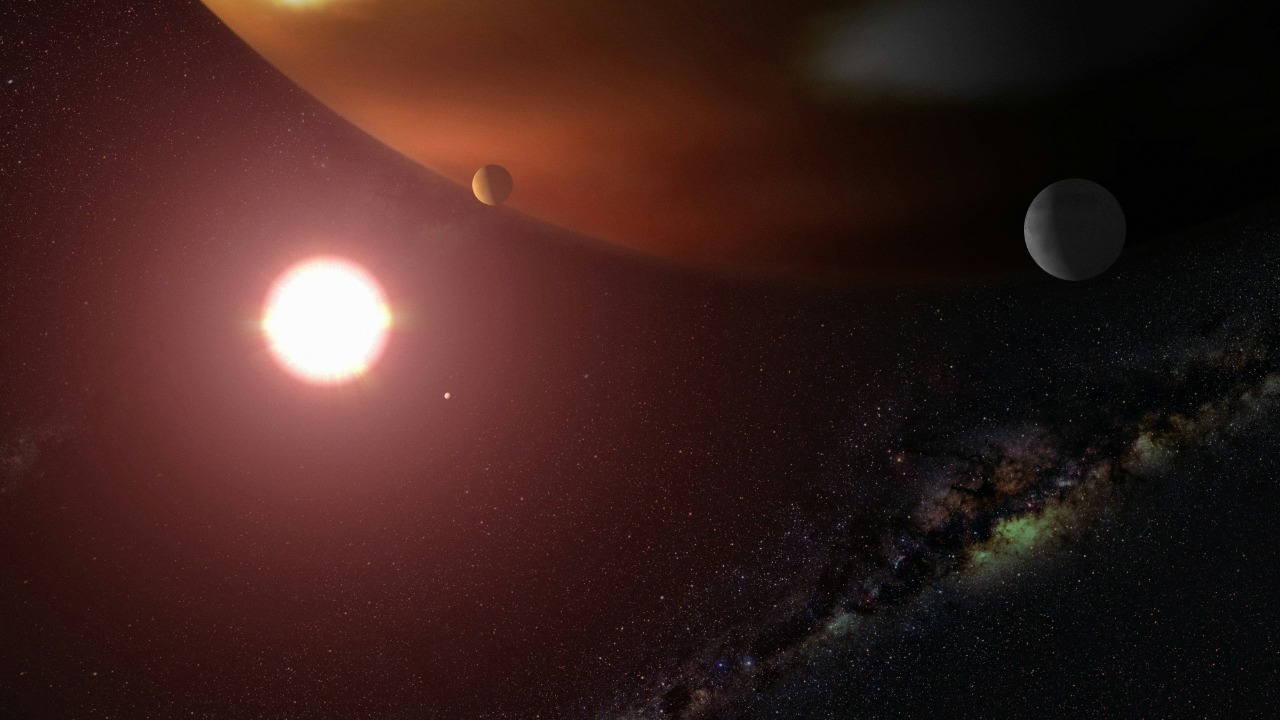
Astronomers have introduced a new class of exoplanets, dubbed “soot planets,” which are believed to be more widespread across the galaxy than previously thought. These planets are characterized by their carbon-rich atmospheres, which give them a sooty appearance. The discovery of these planets, which could have formed under conditions prevalent in metal-poor environments early in the universe’s history, challenges traditional models of planetary formation. This concept is detailed in a recent study, which suggests that soot planets might explain the observations of dim, obscured worlds detected by telescopes like the James Webb Space Telescope.
Defining Soot Planets
Soot planets are unique in their composition, characterized by atmospheres rich in carbon-based particles. These particles, similar to soot, absorb light and create a hazy, dark appearance. This characteristic has been observed in spectroscopic data from distant exoplanets. Unlike traditional classifications of planets, such as gas giants or terrestrials, soot planets are believed to form from carbon-dominated disks around stars with low metallicity.
Polycyclic aromatic hydrocarbons (PAHs) play a significant role in forming the sooty layers of these planets. Chemical models predict the stability of these compounds in high-temperature environments, which are common in the atmospheres of soot planets. This unique composition and formation process set soot planets apart from other known types of exoplanets.
Discovery and Observations
The initial detection of soot planets was made possible through methods such as transit photometry and infrared spectroscopy. The James Webb Space Telescope, in particular, identified light-blocking hazes consistent with soot compositions on exoplanets orbiting red dwarf stars. One key example is the exoplanet candidate GJ 1214b. Early Hubble observations revealed hazy atmospheres that align with soot planet traits, a finding later refined by data from the James Webb Space Telescope.
In 2025, astronomers at the University of Chicago reinterpreted existing datasets and proposed soot planets as a distinct class rather than anomalies. This reinterpretation has opened up new avenues for understanding the diversity and prevalence of exoplanets in the universe.
Formation Mechanisms
Soot planets are believed to form under specific astrophysical conditions. Protoplanetary disks with high carbon-to-oxygen ratios in environments with low heavy metal content, common in the early universe, favor the formation of soot planets. Stellar radiation plays a crucial role in driving photochemical reactions that produce soot particles. Simulations from the past decade that model carbon grain growth in disk atmospheres support this theory.
These planets accrete material differently from oxygen-rich worlds. Instead of forming layers of silicates and ices like other planets, soot planets are thought to have carbon monoxide-dominated interiors overlaid with hazy exteriors. This unique accretion process further distinguishes soot planets from other known types of exoplanets.
Prevalence in the Universe
Recent models suggest that soot planets could comprise up to 20-30% of all exoplanets in metal-poor regions. This estimate is based on statistical analyses of over 5,000 confirmed exoplanets. If accurate, this could significantly increase the known exoplanet population, as soot hazes might have hidden these worlds from earlier detections.
These findings also have implications for our understanding of ancient stellar populations. Low-metallicity stars, which were prevalent in the universe’s first billion years, would naturally produce soot planet systems. This connection could provide valuable insights into the early stages of planetary formation in the universe.
Implications for Habitability
The thick soot layers on these planets could trap heat and block ultraviolet radiation, creating stable but dim surface conditions. These conditions might allow for the existence of exotic forms of life adapted to low-light environments. However, the hazy atmospheres of soot planets also pose challenges to traditional habitability zones. These atmospheres alter temperature profiles and atmospheric chemistry in ways that defy Earth-centric models.
Future observational strategies, such as targeted programs by the James Webb Space Telescope, could probe for biosignatures on soot planets. These might include methane imbalances or organic aerosols, which could indicate the presence of life.
Future Research Directions
Upcoming telescope missions, such as the planned 2027 launch of the Nancy Grace Roman Space Telescope, could survey thousands more candidates for soot signatures in infrared wavelengths. This could significantly expand our understanding of the prevalence and characteristics of soot planets.
There is also a need for advanced modeling to distinguish soot planets from other hazy types. Data from ground-based observatories like the Extremely Large Telescope could be incorporated into these models. Interdisciplinary efforts, such as collaborations between astronomers and chemists, could also help refine detection algorithms by lab-testing soot formation under exoplanet-like conditions. These efforts could pave the way for more accurate and efficient detection of soot planets by 2030.
As our understanding of soot planets continues to evolve, these intriguing worlds promise to shed new light on the diversity and complexity of planetary formation in the universe. The discovery of soot planets not only challenges traditional models of planetary formation but also opens up exciting possibilities for the search for life beyond our solar system.